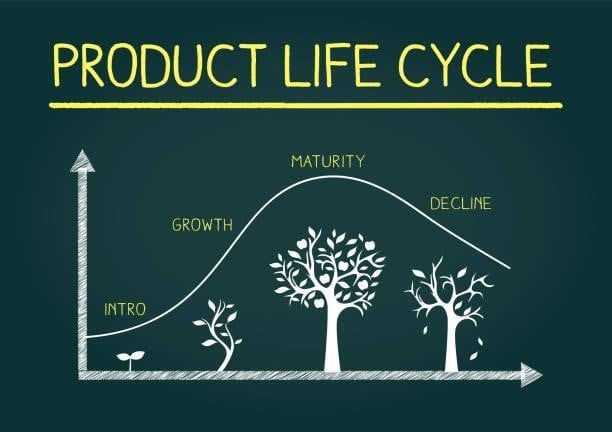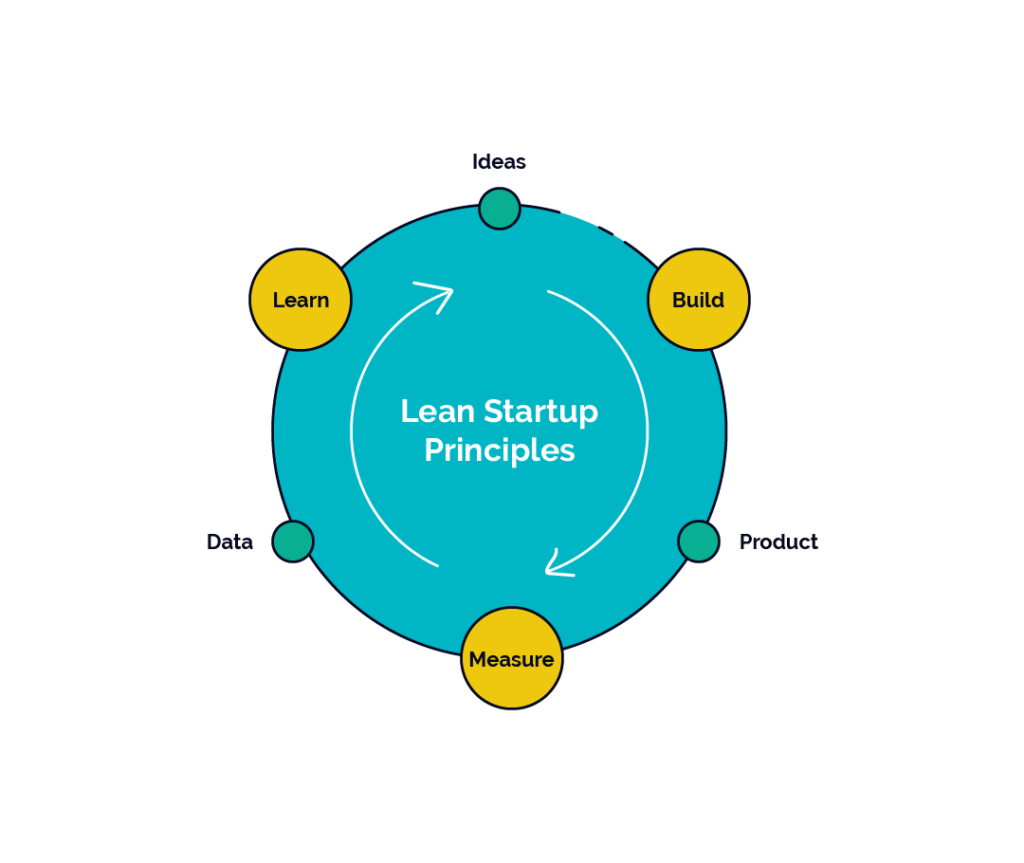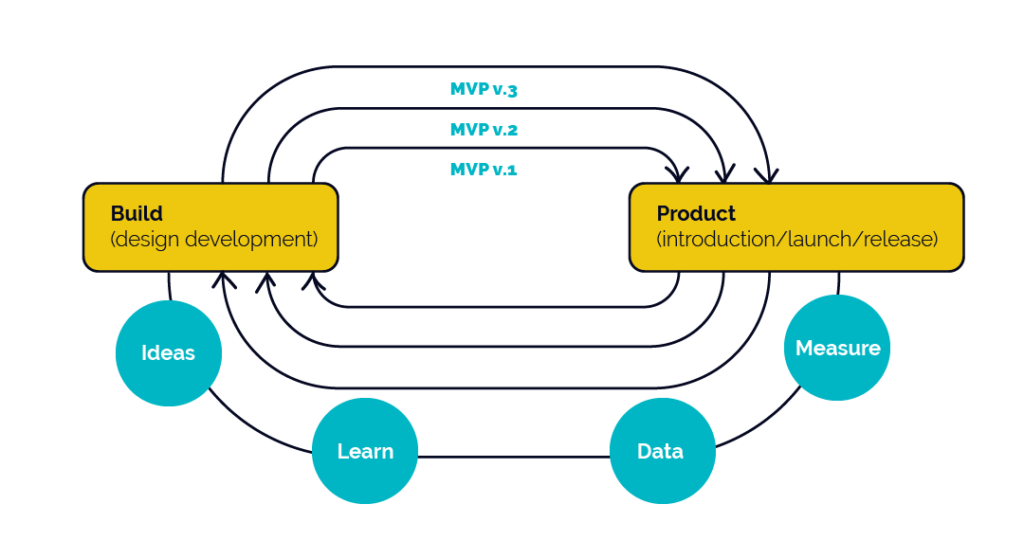In 1931, the role of the product manager evolved because of an 800-word memo by Neil H. McElroy, then a junior executive at Procter & Gamble. Influenced by him, Bill Hewlett and Dave Packard shaped the product manager into the customer’s contact on the inside, ensuring that the customer was closely connected to the decision-making in product development. Thus began the dance between product development, the product life cycle, and the product manager.
Today, good product managers are worth their weight in gold in the business world. And the product life cycle is the vehicle of choice, driving the product from conception to (hopefully) success. Yet the ratio of success stories to product launches is rather low.
In this article, we seek to challenge the product life cycle’s title as the best road to success in product development and to propose an alternative approach.
- Why Should You Rethink The Traditional Product Life Cycle?
- The Alternative: Go Agile With The Lean Startup Methodology
- Why The Lean Startup Approach Is Better Than The Traditional Product Life Cycle
- The Product Manager – The Pragmatic Maverick
- The Lean Startup Model In Practice – Success Stories
The Product Life Cycle – Straightening Deck Chairs On The Titanic?
The product life cycle is the Bible of the product development world. Its stages are as much truth to us as the stages in the life cycle of a butterfly.

- Introduction: Launch the product and check the user response.
- Growth: The product is well-received and sales climb.
- Maturity: The product sales are at a peak and hit a plateau.
- Decline: The product dies a natural death.
1, 2, 3, 4…
Countless product managers all over the world pay homage to this product lifecycle, faithfully following every step of it after they have finished all their design, research and development, and product success forecasting.
Then they launch/introduce the product and pray for a miracle. “May all the stars align and make my product the most successful thing since sliced bread.” Sound familiar?

If you consider that approximately 80% of new products fail every year (the findings here differ quite a bit), it means that something is amiss in this entire process. And anything you do for the product during its life cycle is just straightening deck chairs on the Titanic.
“There comes a point where we need to stop just pulling people out of the river. We need to go upstream and find out why they’re falling in.” - Desmond Tutu
This lovely quote by Desmond Tutu applies to product development as well. If products are failing, you need to go to the beginning and fix what’s not working. Go back in time and improve the design and research stage. Maybe someone will launch that product for you—a time machine.
Why Should You Rethink The Traditional Product Life Cycle?
First, remember that the product life cycle was simply a description of the observed progression of a product through the market. It was never supposed to be a product development method. And product lifecycle management evolved as a way to optimize growth and profitability at every stage of the product life cycle. But this was not set in stone.
Second, remember the ultimate goal of product development and product life cycle management: a successful product. It’s as simple as that.
Now that we have established these two realities, how do you give yourself the best possible chance of finding the Holy Grail—a successful product? Your mind probably turns to the development stage, which falls before the introduction stage of the product life cycle.

Successful products leave happy and satisfied users in their wake. This is the most obvious indicator of the success and growth of a product. But how many real users get to use the product during the development stage when you need to know how users feel about your product the most? BEFORE the launch?
Common Challenges Of The Product Life Cycle
There are several reasons why products fail and you’ll find several articles on them. But there are a few common challenges that you see across the board:
- Targeting the wrong audience or market
- Inaccurate understanding or identification of customer needs
- Inadequate research, usually leading to the above two
If anything, these challenges have been amplified by the pace of life and technology today with trends and need changing at an insane rate. What if you could ensure that you reduce the occurrence of these common challenges to nil or almost nil?
The trouble with following the stages of the traditional product life cycle is that it is linear. Your progress through product development doesn’t have to be. The product life cycle states that the launch comes after the development is completed. But this is counterintuitive: how do you know with certainty that the finished product will succeed?
If you remember the successful products = satisfied users equation, you can do whatever you have to do to achieve that. The answer is agile product development taken one step further and refined into a process that ensures that you are winning from the get-go. Time to go lean!
The Alternative: Go Agile With The Lean Startup Methodology
If you are in product development, you have probably either read or at least heard of “The Lean Startup” by Eris Ries. This book, I believe, holds the key to product development that will leave both the product manager and the customers happy.
“But this is a methodology for startups!” Yes and no.
That brings us to one of the five principles of the Lean Startup methodology: Entrepreneurs are everywhere. The product manager or business owner of any business (startup or otherwise) in the fast-paced, rapidly evolving, highly uncertain market of today, is working under the conditions of a startup. The only differences that set an established company apart from a startup are reputation, the availability of resources, and infrastructure.
The stakes are just as high in an established business as in a startup because all it takes is one loss, one dud product, one moment when you take your eye off the ball to sink your business. And history has shown us that all the reputation, resources, and infrastructure in the world cannot ensure a profitable product. Case in point: Nokia and Blackberry faded into the shadows as Apple scored a slam-dunk with the iPhone in 2007. You snooze, you lose.
The Build-Measure-Learn Cycle
The Lean Startup methodology is aimed at creating measurable value in as short a time and with as few resources as possible. This is done by following the BUILD-MEASURE-LEARN cycle. In this cycle, you build a minimum viable product (MVP), measure the customer response to it, learn from this data, and then refine the MVP after incorporating the learnings from the previous version.

The pillars of the Build-Measure-Learn cycle:
Validated Learning
With each MVP, the effort is spent only on learning what users want. This learning is arrived at using empirical data collected from real users by noting their responses to the MVP. Thus all learning from the MVP is validated. This is called Validated Learning.
Innovation Accounting
Accountability is a necessary component of any business venture. However, innovation, which relies on assumptions, does not naturally lend itself to accountability. The Build-Measure-Learn cycle provides the data you need to test the sustainability of these innovations using a framework called Innovation Accounting.
This framework has three steps:
- First, establish a baseline using data from the MVP to identify where you stand.
- Then tune the engine by making changes to the MVP that aim to move the baseline closer to your ideal product.
- Finally, based on the data gathered from each Build-Measure-Learn feedback loop, determine whether you are making sufficient progress towards your ideal. If yes, persevere. If not, pivot.
If you incorporate the Build-Measure-Learn feedback loop into the product life cycle, this is what it would look like. The development stage before the introduction of the product would be replaced by the Build-Measure-Learn approach, pushing the product through the loop as often as needed to reach the best version of that product.

Why The Lean Startup Approach Is Better Than The Traditional Product Life Cycle?
Let go of the need for perfection.
That first MVP does not need to look spectacular, it does not need to have all the bells and whistles. It needs to have just enough to test each assumption that you have made about the product.
Customers don’t care how much time something takes to build. They care only if it serves their needs.
Eric Ries
This way is far better than investing months and years in ideation, development, and testing only to learn after launching the product that nobody wanted it in the first place. Use the build-measure-learn feedback loop to quickly test all the assumptions you have about the product’s appeal to customers and to track the product’s progress towards your growth milestones.
Related Read: 10 Best User Feedback Software To Improve Customer Satisfaction
Measure actual user behavior, not opinion.
A poll won’t cut it. “Yes, I would love to buy a product like this!” Nuh-uh. Test what they actually do by releasing the MVP to them. Let them put their money where their mouth is. Because that will tell you in no uncertain terms whether your product will sell or not.
Use innovation accounting to anchor innovation to real progress.
Product managers are often skeptical about innovation in product development because innovations lack the historical data that can be used to forecast user interest and engagement. If you follow the traditional product life cycle, this fear is an inbuilt deterrent to real innovation and brilliance in product design.
However, by using the Build-Measure-Learn cycle, you use innovation accounting to ensure that your innovation is earning its keep. This is done by establishing a baseline with the MVP, then fine-tuning it based on validated learning and measuring the drivers specified in the growth model for your product. This will tell you right away whether your innovation is on a profitable path.
Choose to pivot or persevere.
If you are building the right product, these scores from your innovation accounting should climb steadily from the baseline established by the first MVP. If they are not moving the needle much, that’s a sign that you may need to pivot. The Build-Measure-Learn cycle gives you the data, learning, and freedom to choose to either pivot or persevere with your growth model.
The Product Manager – The Pragmatic Maverick
As a product manager, the Lean Startup methodology gives you the tools to be successful while also taking a chance on new ideas and new possibilities. The Build-Measure-Learn loop takes care of the common challenges to creating a successful product that I listed earlier in this article:
- By using the validated learning from the MVPs, you can be sure of the audience and market that you need to target.
- Validated learning and innovation accounting can help you prove your assumptions about user needs or maybe discover needs you had not thought of before. Once you identify new needs, you can pivot to include them in your product.
- And you will always have sufficient research to back up your choice of audience, market and needs to cater to.
Armed with these wins, you can be open to new possibilities or new paths, yet always with an eye on what is needed to make your product profitable in the real world. You can be innovative, knowing that you have the chance to test your innovations early on in the cycle and to pivot if necessary without incurring the wrath of your stakeholders.
The Lean Startup Model In Practice – Success Stories
Zappos.com
When Nick Swinmurn, the founder of Zappos, the world’s largest online shoe store, conceptualized his store, he was unable to find a central online store with a great shoe collection. But he wanted to confirm his hypothesis that customers would be willing to buy shoes posted online. Rather than painstakingly building up an inventory of his own, building a website, getting warehouses, and looking for distribution partners before selling shoes online, he tried out an MVP of his own.
Nick asked local shoe stores to allow him to photograph some of their shoes. In return, he would post the shoes online and return to the store to buy the shoes himself if a customer bought them online. He shipped these shoes to the customers himself. He did this until the customer demand became too high to manage manual deliveries.
With the help of this very simple experiment, he gauged customer interest in his offering and gathered some unexpected learnings in the bargain about taking payments, managing returns, and customer support. Armed with this learning, Zappos went on to become a highly profitable venture.
General Electric
General Electric (GE) used the principles of the Lean Startup to establish its own innovation program—FastWorks. Under this program, GE brought about a cultural shift within the company initiating several measures, such as training its leaders, to build awareness of the Lean Startup methodology. In 2013, the FastWorks program produced a refrigerator built with 50% of the cost and time usually spent on bringing out a new product.
GE went a step further and built a team of coaches trained under the FastWorks program that would continue to facilitate the growth of FastWorks and would support the development of expertise within GE.
Final Thoughts
The Lean Startup methodology with its Build-Measure-Learn cycle solves some of the most fundamental problems that most product managers face in launching a successful product. If you remain true to the process, you have the recipe for a product that customers are sure to want, that caters to the right market, and that has tons of validated learning to back it up. A win for you, a win for the business owner, and most importantly, a win for your customers.
It certainly is a shift from the norm, an evolution of the product life cycle. The question is: would you like to try it out? Are you willing to restrain the perfectionist in you and let that imperfect MVP be released to users?
What kind of product manager do you aspire to be? Is your mind already buzzing with ideas on how to use the Build-Measure-Learn cycle in your next product?
Let us know your thoughts on this topic in the comments below. How feasible do you think it is to use the Build-Measure-Learn cycle? Have you ever tried it? What unique challenges have you faced in product management using the traditional product life cycle?
For more insights on product management, subscribe to The Product Manager newsletter.
Related Read: What Is The Product Development Life Cycle? 7 Stages And Why They Matter


